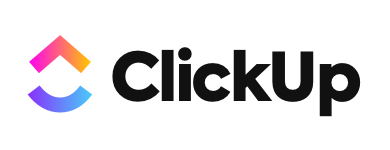I Built A Technology For Marines With 2,300+ Active Contacts [From Germany]
Hello! Who are you and what business did you start?
My name is Ivan, I’m a founder of Marine Digital. We work in a niche of big vessel performance optimization. Our main goal is to make modern instruments of decarbonization available for the mass market.
Being a deep-tech company, we develop digital twin and AI algorithms. Our technologies allow decreasing fuel consumption of big vessels up to 12% and related CO2 emission reduction up to 600 tons per year per vessel.
Due to the latest technology solutions we use, we’ve made massive progress in performance digital twin cost reduction (around 10 times lower than the average market cost). Thus, we provide the opportunity for non-giant marine companies to use it (before it was only affordable for the market leaders like Maersk or Hapag Lloyd).
During our 3 pilot projects we’ve earned about €60 K, and now we are launching the production of our digital twin in the EU.

What's your backstory and how did you come up with the idea?
I have a mixed background: 13 years in banking, IT, and logistics. Having worked with the supply chain automatization, I had an opportunity to communicate with several ports. I saw how medieval the industry was. The idea to create a modern digital service in this field seemed brilliant. It’s been more than 3 years since that moment.
One of our investors is APX VC Fund. As a result of work with their mentors, I took one of the most difficult (and, as time showed, one of the best) decisions in my life — to make a pivot. And in October 2019 I started building from scratch my new project for a fuel optimization system. The idea was so well-timed, so the first three clients I’ve talked to immediately agreed to start a pilot with us. Now those pilots are being transformed into commercial contracts. In my opinion, it’s the best possible validation — when the market is ready to use your product and ready to pay for it.
Take us through the process of designing, prototyping, and manufacturing your first product.
I had an understanding that the creation of such a complex product won’t be a fast process. The RnD cycle in the marine industry is in general very long. The banking sector has a hard conservative mindset - nothing seems to be moving for many decades. Logistics is almost the same and even with a lower level of automation. IT is a choice for the people who have a passion to change the world.
It took 2 months to build the initial prototype and around 1 year to adjust it to the vessel operation reality. Still, we see that RnD will take at least 1 more year to make it disruptive. The vessel is a metal object with metal doors, cables, 150-300 meters lengths, with a lack of even satellite connection sometimes to stream the data, 100% humidity, and high temperatures in the engine department. It's not far away from a space tech level of challenges.
Initially, we started working on data acquisition through existing hardware solutions but pretty soon we found out that there is a lack of what we call modern technologies. 200 meters of wires for the installation, 5-10 days of the installation process. It was a bit of a disaster - as hardware development is complicated and investors are not willing to support hardware projects as much as software brothers. It was a scary thing, but with my team, we decided that without a good data layer the good final product is just not possible. So we made a hard decision to start working on the hardware ourselves, to build this expertise, and take the risks.
Data acquisition through the hardware as we believe is the only way to make shipping transparent, to show the real emissions, and as the final goal work on the reduction of CO2, SOx, NOx. And to calculate the emission you need to measure them somehow. All ships have a different internal setup of the equipment, different physical models, cargo load, etc, so the real-time performance digital twin is the only true way to do that. So we sat down together and decided to make a good product taking these risks of hardware development but at the end to have a chance to become a really good and useful solution for the worldwide users of maritime transportation.
Despite the simplicity of the interface — our product has only 4 screens — behind that stands the big work of more than 10 experts of different niche domains (captains, navigation officers, marine engineers, electro technicians, industrial UX experts, etc.)
We’ve worked through the requests with the people from the industry because we needed to solve the problems which aren’t obvious from the outside looking in.

Describe the process of launching the business.
Initially, I tried to start this project in Russia in 2019, but I’ve encountered quite a frightening level of corruption in the industry.
I’ve changed my focus to Europe and started looking for investors. In 2020 I attended all the possible events throughout Europe (Disrupt Berlin, Slush, Websummit, etc.) where I met several people interested in my idea, including the representatives of WTSH.de and APX.VC. That’s when I decided to base my project on Germany.
Establishing the multi-domain expertise inside the team was the major important part of the start as the data acquisition requires not only software development knowledge but also hardware, connectivity, vessel engineering, and regulations understanding.
We start with building our laboratory, talking to the marine experts, and step by step finding the right people to work with. Boarding pilot customers in the marine sector is not an easy task, but after 10 meetings we made it and found the first interested companies to test the technologies.
The hardware development and company establishment is not an easy task, the minimal cost to test something starts with 150K for the equipment, experts, laboratory, etc. In Germany, the local experts are more expensive, but there is always the option to search and find people worldwide, so there are options to manage the RnD budget. COVID lockdown brought us the option to work remotely and for some tasks, it’s an actual discount for your office, you don't need huge space anymore.
In October 2020 I launched a company in the North of Germany, and in March 2021 we closed a round of 600K with the government-related institutions of Schleswig-Holstein (WTSH, IBSH, and MBG). By that moment, we already had 3 pilots in progress which generated revenues for the company.

Since launch, what has worked to attract and retain customers?
Currently, we have very good progress in pipeline generation and media coverage. A chain of experiments leads us to a good marketing strategy. We have up to 1000 visitors per day on our website, 17K + visitors and 170+ requests on site last month, over 2300 active contacts with the clients, and quite a high conversion rate with zero costs for traffic and ads.

Reputation and customer satisfaction are very important in the marine industry. 2 or 3 bad cases in one region can make any further development impossible. Among the general insights, I would like to highlight that a clear and industry-tailored value proposition always works, because the majority of the industry is pretty much about cost-efficiency.
How are you doing today and what does the future look like?
Our planned profitability is about the year 2022-2023 as we’ve started not so long ago. I can’t share a lot of metrics, as they are our secret sauce. What I can disclose though, is that right now we have a low customer acquisition cost of around €200. Our product life cycle is 2-3 years. Average customer gross revenue starts from 240K within the product life cycle.
Never give up. Never forget why you decided to start your venture. There is no direct connection between your success and the amount of effort you put into it, so your journey can be fast and triumphant, as well as long and full of failures”
At the moment we are getting ready for worldwide mass-market scaling, which will lead to several adjustments to our operating model. To put it simply, we plan to go with a lower margin on a higher scale. We will increase our cost structure to stabilize the manufacturing cycle, last-mile delivery, and a stable growth pace based on the local representatives model. We will have a higher margin and a higher level of revenues per client and higher coverage worldwide and at the same time higher costs related to manufacturing, client acquisition, and especially our vessel engineering specialists.
Through starting the business, have you learned anything particularly helpful or advantageous?
My major takeaway from the last 3 years is about people and their motivation. All of them are quite obvious and can be included in the “Startup for Dummies” book. First of all, you can trust but you should verify the references, expertise, core values of your partners, teams, and everyone who impacts your development.
If someone you are dealing with has no success cases in the domain you cooperate in, it doesn’t mean they won’t succeed, but it strongly increases the risk on your side. Founder should be rational and even pessimistic sometimes, because the miracle may happen, but it is better to be surprised with a result than disappointed with your high expectations.
What platform/tools do you use for your business?
We use AWS, Confluence, Click Up, but Google and Apple calendars are the most important ones. Honestly, good planning is the most important thing in entrepreneurship, don’t underestimate it.
What have been the most influential books, podcasts, or other resources?
One of the most influential books I’ve read as a youngster was Atlas Shrugged. Back then it felt like someone just took my vision of work ethics and composed it into a book.
Another one is Hard Thing About Hard Things by Ben Horowitz. It’s mostly about being able to act in difficult situations which are numerous in any business. Horowitz shaped my understanding of the bravery and vigor you need along your entrepreneurial journey, especially when it comes to hard decisions and dramatic changes in the company.
Advice for other entrepreneurs who want to get started or are just starting out?
Never give up. Never forget why you decided to start your venture. There is no direct connection between your success and the amount of effort you put into it, so your journey can be fast and triumphant, as well as long and full of failures. Learn from people who succeeded in your niche, gain some skills from them, decreasing the number of unexpected events in your venture.
Are you looking to hire for certain positions right now?
We are always in need of good senior data scientists with industry domain knowledge (navigation, meteorology), marine engineers (electro technicians). Within our core team, we are highly committed to delivering modern technologies to the marine mass market and mitigating climate change with practical actions. We are looking for professionals sharing the same values. I check every CV that comes to [email protected]
Where can we go to learn more?
If you have any questions or comments, drop a comment below!

Download the report and join our email newsletter packed with business ideas and money-making opportunities, backed by real-life case studies.

Download the report and join our email newsletter packed with business ideas and money-making opportunities, backed by real-life case studies.

Download the report and join our email newsletter packed with business ideas and money-making opportunities, backed by real-life case studies.

Download the report and join our email newsletter packed with business ideas and money-making opportunities, backed by real-life case studies.

Download the report and join our email newsletter packed with business ideas and money-making opportunities, backed by real-life case studies.

Download the report and join our email newsletter packed with business ideas and money-making opportunities, backed by real-life case studies.

Download the report and join our email newsletter packed with business ideas and money-making opportunities, backed by real-life case studies.

Download the report and join our email newsletter packed with business ideas and money-making opportunities, backed by real-life case studies.






